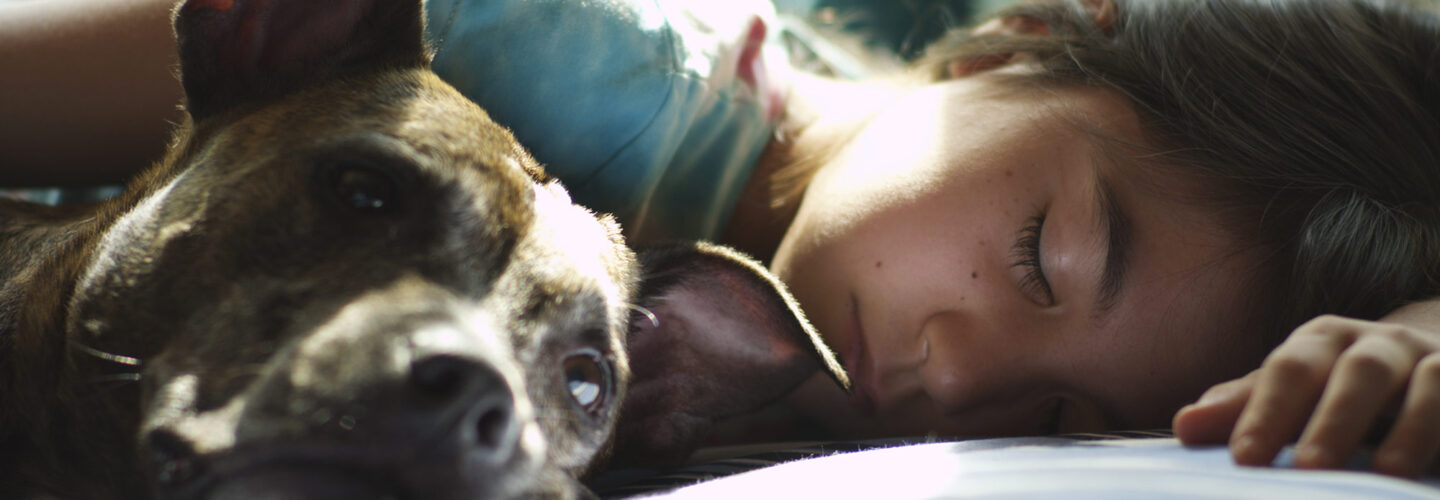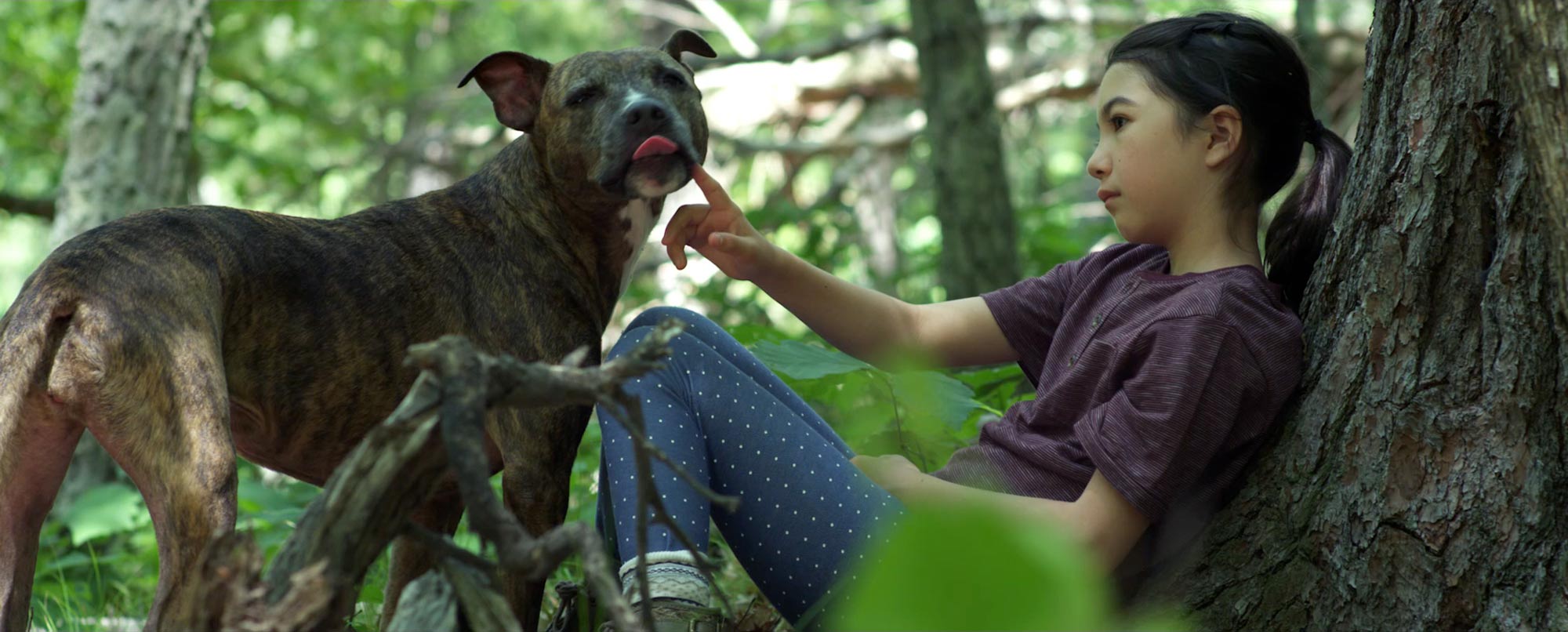
Despite beginning life as a twisted revenge fantasy harking back to an unpleasant childhood incident, Director Nick Singer’s short film ‘Bite’ instead developed into a gentle, understated tale of the harsh consequences which result from shirked culpability. DN spoke to Nick about his return to shorts, casting child and canine leads and paring a narrative back to its thematic essentials.
You’ve completed three shorts since your debut feature Other Months screened at SXSW 2014. What brought you back to the shorts arena and how do you feel shorts differ from features as a means of expression?
The straightforward answer is that I started graduate school after finishing Other Months and I wasn’t able to continue to make features. The more nuanced answer is that features and shorts are entirely different mediums, with very different goals, that demand different narratives. Perhaps another way of saying this is: some ideas are appropriate for shorts, others for features — just like some ideas are for poems, others for short stories, and others for novels. They probably shouldn’t be interchangeable.
For Bite, I never considered the idea feature-length. It was always my intention to make something that felt light, like a memory. The film has a certain quality as if it were a tiny, polished whisper. Because shorts demand less of an audience, they can be more experimental in their approach, formally and narratively. I don’t think a feature could, or should, for instance, sustain a quality like this.
What was the initial inspiration for Bite and how did the story develop across it’s various drafts?
When I was about 3, I was bitten on the cheek by a dog near the house where I grew up. I only vaguely remember the experience, but my face was badly injured, and I still have a small scar. I guess I’ve been frightened and fascinated by dogs to some extent ever since. The first draft of the film was quite different. Looking back, I can recognize that it started as perhaps a kind of twisted revenge fantasy.
With Bite it was always my intention to make something that felt light, like a memory. The film has this quality as if it were a tiny, polished whisper.
The story, set in the woods in the dead of winter, was about a father, whose daughter is severely mauled in the stomach by a neighbor’s dog. After the neighbor refuses to take action, the father, in the middle of the night, sneaks into the neighbor’s backyard, poisons the dog, and drags it into the woods in a sack to bury it. As he’s burying it, the dog wakes up. Still suffering from the poison, and blind in the sack, it stumbles around pitifully and starts barking. The father goes to his barn and retrieves a shotgun. On his return, the dog has vanished. He returns to his house, and after entering, sees the dog stumbling around his yard. He approaches the dog outside and shoots it. It doesn’t die, however, stumbling around in the snow, dripping blood. The dog, now out of the bag, moves to attack him. He shoots the animal a final time and kills the dog. Afterwards, he looks up toward the house. In a small window, his daughter is watching.
Of course, this is an entirely different story. I found myself becoming less interested in the bleak, gory nature of the story, which started to feel vulgar, and more and more interested in the daughter and the dog. Somehow, her experience of this event seemed more consequential. After a number of drafts, the big revelation was that it could be her dog. This seemed to open up the story immensely, and from there, it was a quick jump to this story.
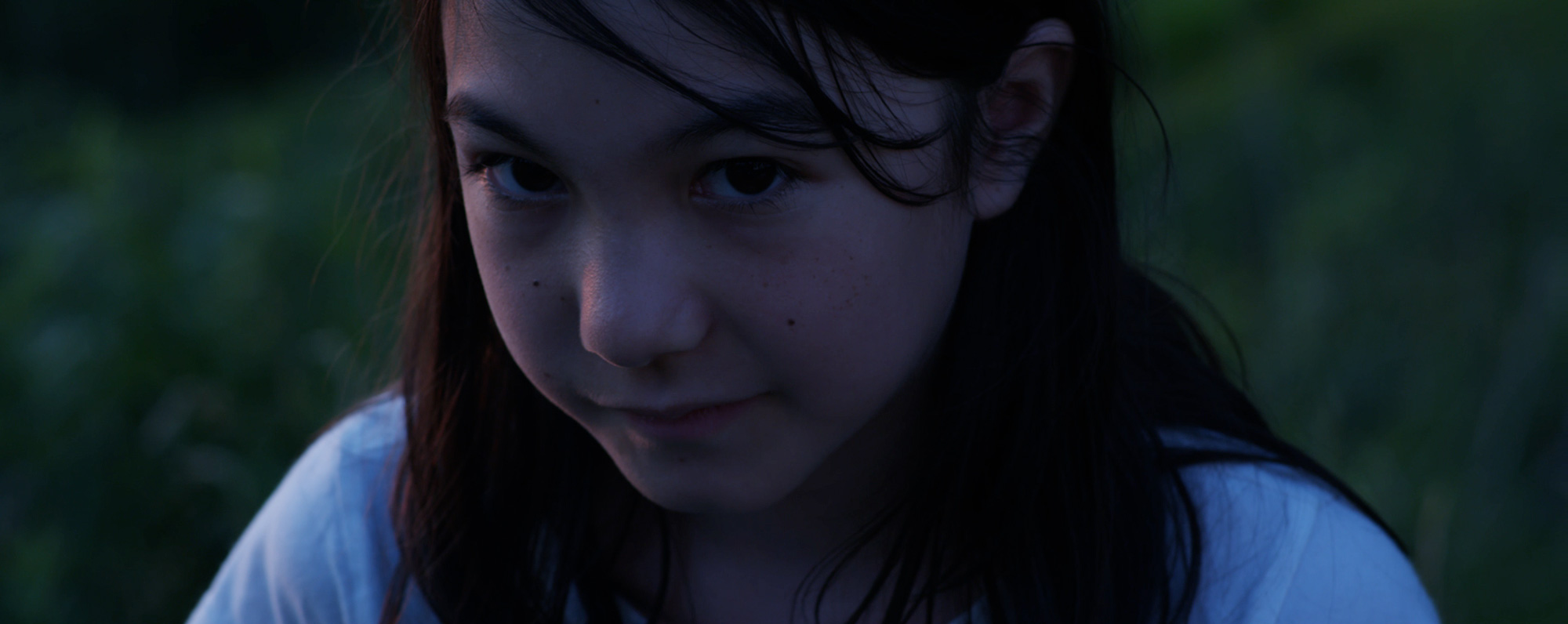
How did you come to cast Phoebe Young in the lead role and what were the techniques you used to shape her performance?
Phoebe was the wonderful result of a very demanding casting process, certainly the most thorough I’ve done. My Producer, Fernanda Frotté, and I saw nearly 50 actresses for the part. In auditions, you get a pretty immediate sense of an actor and their ability, and for just a couple, Fernanda would turn to me after the actor left the room and say, “Now that’s an actor!” Phoebe was one of these. Also, for shorts especially, you’re casting for strong faces, which both Phoebe and her father, played by Peter Jensen, certainly have.
The extra tricky part with child actors is that you’re also casting their parents; we were very lucky to find Shelley, Phoebe’s mom, who was a pleasure on set and believed in the vision of the project from the start — no small thing for dark material like this. As for shaping the performance, the main thing was trusting Phoebe and her instincts. She’s a remarkably intense kid — I think this comes through in the film — and even if she didn’t always have the language, she was invariably locked into the emotional tenor of the scene.
Likewise, could explain the process of casting Coco the dog and working with handler Melquan King on set? Were there actions within the script which turned out to be more difficult to capture than you had envisioned?
Finding a dog for the film was certainly our toughest production challenge. I knew I wanted a larger dog for the project — the audience has to really fear for the actress — and a pit bull was my hope. It’s worth mentioning that pit bulls are the most discriminated against of all breeds, and I heard all kinds of crazy warnings about them, like that their jaws ‘lock’, which is totally false. I hope the film, while certainly not being an advocacy project for pit bulls, at least provides a more tender view of the breed.

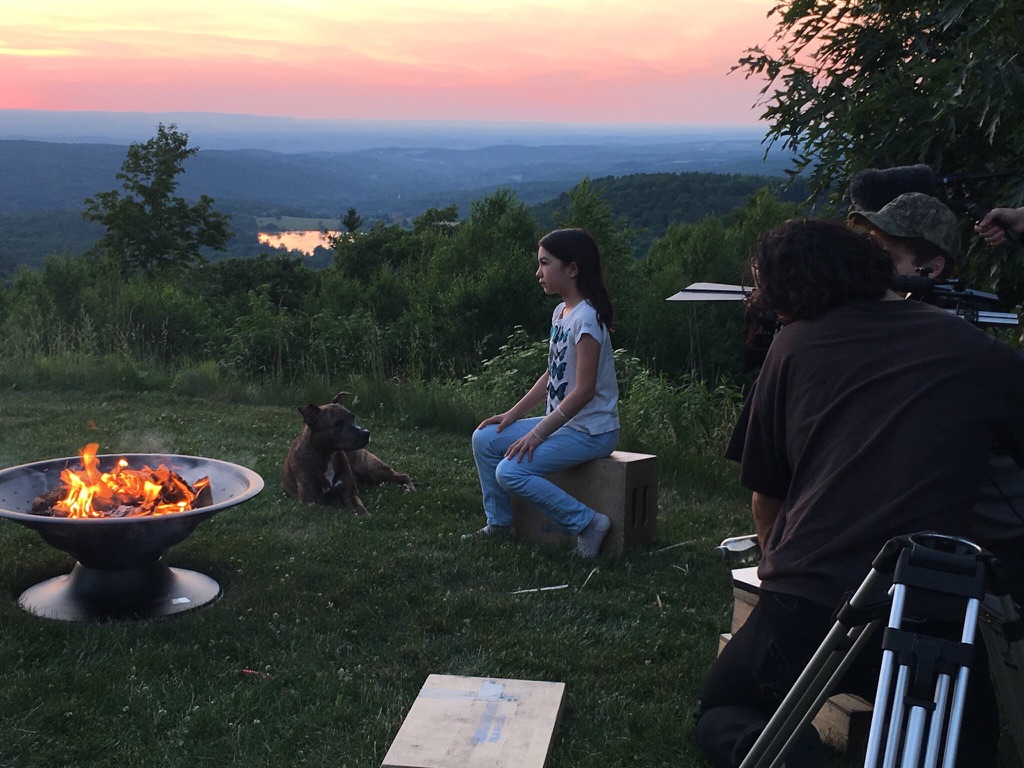
Handlers often charge exorbitantly high rates for dogs trained to do what we needed, so we cast a very wide net. I spoke with handlers as far away as Michigan! The trick was finding a dog and handler with enough training to guarantee the safety of the actress and fulfil our insurance requirements, but with a resumé short enough to justify taking on a short film at a reasonable rate.
Coco has a great look, and Mel has done a fantastic job training her. She hadn’t had much filmmaking experience, and there were definitely a few moments on set that were tough. For instance, Coco was so sweet and docile that getting her to ‘tug of war’ with the stick was a real battle, and we actually had to shoot the scene twice to get enough usable footage. In the script, I had envisioned more of a leaping jump when the bite itself happens, but it quickly became clear that Coco was not aggressive that way. So, we spent a lot of time working with Mel to get precisely the moments that we needed to convincingly portray the bite, down to the number of frames.
Bite has a very clean, fresh aesthetic, what informed the film’s look?
I spend a great deal of time before a film with Justin Zweifach — the Cinematographer on Bite, and with whom I’ve shot all of my major work. We hang out, share images, explore the script, and question it intensely. These conversations can stretch across many days and are always fertile and invaluable to me. The result, besides getting on the same page, is a specific set of aesthetic principles to steer the project.




On Bite, we decided to live on longer lenses — partly because we thought there was a slightly voyeuristic feeling to the piece, and those lenses (at least classically) convey that feeling; but chiefly because we thought it might be an interesting challenge to limit ourselves. There were a number of references we had for the film, one in particular that I won’t mention because we stole so much from it. After the film was complete, we had a couple days of finishing with Marcy Robinson, the film’s Colorist. Marcy elevated the best of what we had captured on set and unified the look. The film was graded for a theatre, and I can promise that as rich as Bite is on a screen, it’s a different experience projected.
The shoot itself was three full days in New York’s Hudson Valley. The house, which appears very little in the film outside of that one bay window, is actually a massive hunting lodge that we rented out, both as a production location and for crew lodgings. On the walls, there were hundreds of antler trophies — like a cervine holocaust. It felt right for the film.
Was it always the plan to not use music in the film?
Yes, we never intended to use music in the film, substituting a typical score for environmental sounds and sound design. There’s a lot of careful work in this regard in the piece, both from the Sound Designer on the project, Will Patterson, as well as from the film’s Editor, Ned Myerberg. I’ve actually never scored my work, though I often use music. I wish I had a better rationale than that it never seemed right for this film, but that’s pretty much what it came down to.
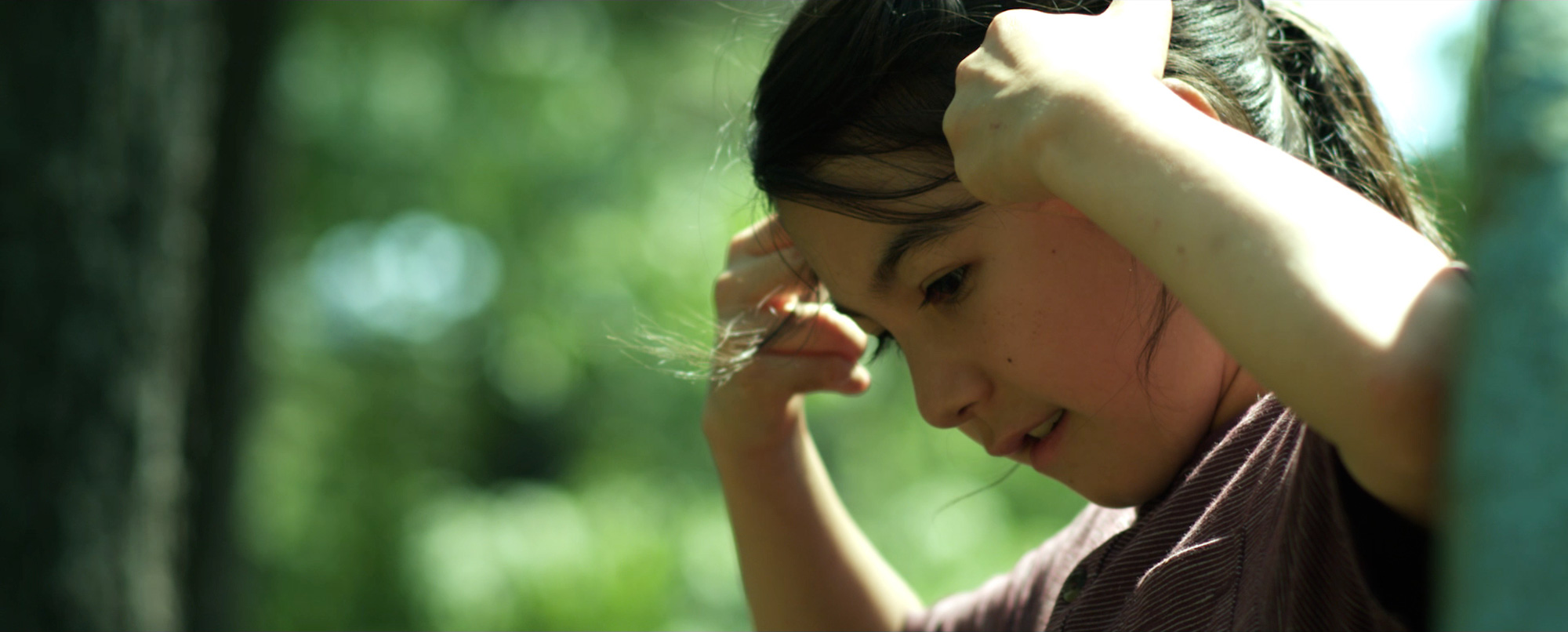
The use of spoken dialogue, much like the film’s narrative, is extremely minimal. Is this sparsity reflected in the script? How easy was it to define the film’s rhythm during the edit?
The script was certainly sparse but got sparser in the run up to the film. It’s worth mentioning Ned here, a friend and filmmaker I’ve worked with a lot in the past, but never as an editor. Ned has a very particular, and particularly acute, cinematic taste, and more than anything I’d done in the past, I thought his perspective would jibe with this project. He did a really incredible job with Bite, both using many of the ideas we had come up with in pre-production and on set, as well as expanding and sharpening them. We had a certain idea of the rhythm — the film needs to give the audience space to enjoy a glance, a pane of glass, the light — but Ned solidified this in the edit, really serving as a final writer on the piece.
What are you working on next?
As a counterpoint to everything I’ve said above, my next project is an extreme story and exposition-heavy short film, currently titled Now Or Later. It’s about a scientist, who’s spent her lifetime in the field of nuclear fusion — the idea to conjure a star on earth and trap it in an invisible magnetic bottle as a safe, alternative energy source, and thus solve climate change — who attends a physics conference in New Orleans with her two daughters and meets a group of Furries, who are attending their own separate conference at the same hotel. Meanwhile, a hurricane is bearing down on the city. It’s the biggest thing I’ve ever attempted, and it’s very possible I’m biting off more than I can chew, but I’m pretty psyched about it. I’m actually writing from Nola where we’re scouting for the film. Wish us luck!

